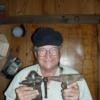-
Posts
2,607 -
Joined
-
Last visited

Frank Turley replied to Borntoolate's topic in Blacksmithing, General Discussion

Frank Turley replied to Ethan the blacksmith's topic in Solid Fuel Forges

Frank Turley replied to ianinsa's topic in Everything Else

Frank Turley replied to 01tundra's topic in Anvils, Swage Blocks, and Mandrels

Frank Turley replied to MarcyOHH's topic in Blacksmithing, General Discussion

Frank Turley replied to jerryt's topic in Anvils, Swage Blocks, and Mandrels

Frank Turley replied to jerryt's topic in Anvils, Swage Blocks, and Mandrels

Frank Turley replied to MarcyOHH's topic in Blacksmithing, General Discussion

Frank Turley replied to Forging Carver's topic in Metal Sculpture & Carvings

Frank Turley replied to Jura T's topic in Chisels, Gouges, Scissors, etc

Frank Turley replied to TheGreenMan's topic in Alchemy and Formulas
